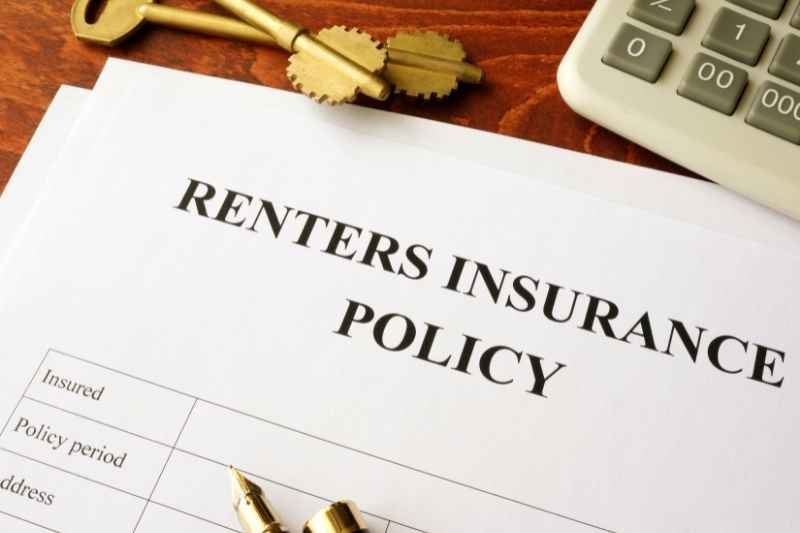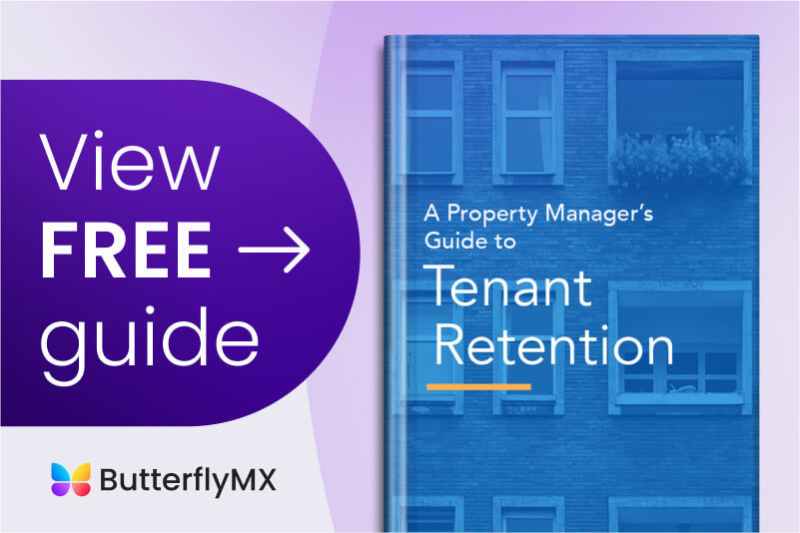Key takeaways
- When writing a new tenant welcome letter, try to remember what it’s like moving into a new building. Convey to your residents how welcome they are, and give them as many details about moving in as possible.
- Don’t let the letter be the only inviting thing they encounter. Providing a continuously welcoming environment is one of the best things you can do to maintain high resident retention.

Moving to a new building can be stressful, even if it’s exciting. And a property manager’s response to new tenants can either make or break move-in day expectations and affect resident retention. One of the best ways to ensure a seamless, stress-free move-in is by writing and sending a tenant welcome letter.
So, how do you craft a tenant welcome letter that’s informative and useful for new residents? Read on to find out!
In this post we cover:
- How do you introduce yourself to tenants?
- What makes a great tenant welcome letter?
- What should an apartment welcome letter include?
- How to send a welcome letter
- When to send a welcome letter
How do you introduce yourself to tenants?
Introducing yourself to new tenants is an important first step in fostering a good resident/manager relationship — something that could also dictate their feelings about lease renewal.
So, how do you introduce yourself to tenants?
The best way to introduce yourself to a new tenant is to craft a compelling and informative tenant welcome letter. This letter will not only make them feel welcome but also answer questions they may have before officially moving in.
Discover 5 smart apartment gadgets that will keep residents happy:
What makes a great tenant welcome letter?
A great tenant welcome letter provides all the most important information tenants will need to know before moving in, but also makes them feel welcomed and excited to move into their new home.
Do you remember your experience with a new property manager or landlord? Thinking about how your new resident would like to be addressed is a good place to start when writing a welcome letter.
In general, the tone of a good tenant welcome letter is a mix of informative and friendly. It’s also well-crafted and answers questions that a new tenant may not have thought of prior to receiving the letter.
A good thing to remember when writing a welcome letter is this: Renters are putting money into a livable service, and your letter will serve as a reference for what they can expect.
What should an apartment welcome letter include?
Similarly to notice letters for moving out, there are quite a few important components a tenant welcome letter needs. This is the best opportunity you’re going to have to make sure a new tenant has everything they need to succeed.
The most important details to put in a property manager welcome letter:
- General welcome message
- Your contact information
- Date of move-in
- Key pick up
- Information about utilities
- Move-in day instructions
- Parking information
- Trash and recycling
- Building rules and regulations
- Neighborhood guide
- Rent payment
General welcome message
First, start by introducing yourself. Welcome the new resident to the neighborhood and the building. Then, let them know how you hope to help them settle in.
Your contact information
Once you’ve introduced yourself, give them the best way to contact you should they have any questions. Offer ideal contact times so they know when you’ll be more likely to reply.
Date of move-in
Your new tenants likely already know when they’re moving in, but having the exact date in writing is a good rule of thumb. This will also give them written confirmation that you’re aware of their move-in date.
If you’d like, you can even include some moving tips, such as how to pack breakables or how to plan a stress-free move.
Key pick up
Perhaps one of the most important details to include in your welcome letter is information about key pick up. Tenants want to know when they can expect to have access to their new place so they can plan ahead, and where they can find their new keys.
Information about utilities
For some residents, utilities can be confusing, especially if they’re not from the area. The best thing you can do for your new tenants is to include detailed information about utilities. This includes the electrical, water, and/or gas companies that service the area.
Move-in day instructions
Are there parking restrictions or zoning laws that could impact a new tenant’s moving window? Are there building rules or restrictions they should know about? This letter is a good way to make sure tenants are aware and can plan ahead for a smoother moving experience.

Reminder for documents
In the middle of a moving schedule, tenants might forget to turn in critical documents such as renter’s insurance and pet policy agreements. Gently remind them to email these documents at their earliest convenience.
Parking information
If applicable, write out details about parking, parking spaces, and parking rules to your new tenants. This will ensure they don’t overstep any parking boundaries and can find their spot quickly.
Trash and recycling
Giving your new tenants the trash schedule and recycling rules is important because they’ll have many boxes and supplies that they’ll need to throw out in the first few weeks.
Building rules and regulations
Before you expect tenants to adhere to building rules, they’ll need to be made aware of them. Including a page of regulations and rules everyone abides by (like excessive noise clauses or property rules) is critical to helping them start off on the right foot.
Neighborhood guide
Welcoming tenants to a neighborhood is great, but telling them a little about it is better. Let them know where the closest grocery store is, give them a map of the school route, or tell them some of the best restaurants in the area. In this section, you can be creative.
Rent payment
Payment is an important factor for tenants and property managers alike. Detailing for new tenants the proper methods of payment and payment schedules will ensure that there are no missed due dates. Putting it in the welcome letter will also help tenants have a clear idea of when their payments begin.
Watch how ButterflyMX works:
How to send a welcome letter
There are a few ways to send a welcome letter:
- Email it
- Mail a hard copy
- Leave a copy in the tenant’s unit for them to find
We recommend emailing a copy of the letter and then placing a printed version inside the unit. This ensures that they can review the letter before move-in day (and keep the copy in their inbox), but also have a physical copy upon entering the premises.
While it’s not mandatory, leaving a small gift or gift card with a physical copy of your letter is a nice gesture. Moving days can be stressful, so gift cards for food delivery or other services will make new tenants feel cared for.
When to send a welcome letter
Once you decide on how to send your welcome letter, you also need to figure when is the best time to send the document.
Because it will contain much-needed information, the best time to send a welcome letter is after the lease is signed but before they retrieve their keys. The sooner they have the information detailed within the letter, the sooner your tenants can formulate a plan.







